Butterflies are beautiful to watch flitting about the garden. Plus, they are essential pollinators for a large number of plants. Many butterfly populations are dwindling right now, but with a few minor tweaks in the garden, we can help save these pretty pollinators and enjoy their beauty and benefits in the garden at the same time. Read on to discover which plants butterflies need during their life cycle, and what to grow to create the ideal butterfly garden.
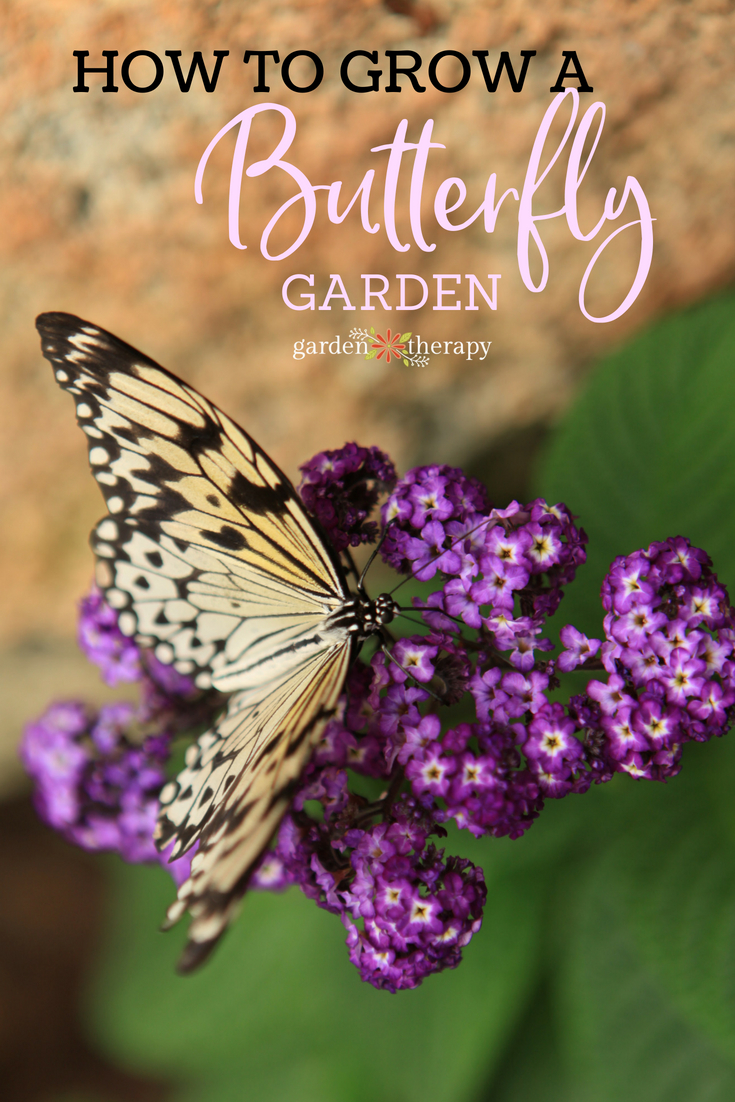
Before you Build a Butterfly Garden: Know the Butterfly Lifecycle
In order to attract butterflies, it is important to understand their life cycle and the specific needs that go along with it.
Egg
Butterflies begin as eggs laid on the leaves of host plants.
Caterpillar
The egg hatches into a caterpillar, which at this stage does nothing but eat! It eats its way out of the egg to gain nutrients and then eats its host plant, which is why it needs to be located on the right plant for that type of butterfly.
Cocoon
Once the caterpillar has eaten enough to grow to its full size, it makes a cocoon or “chrysalis.”
Butterfly
Inside the cocoon, it metamorphoses into a butterfly. Just a few weeks to several months later (depending on the species), it emerges as a mature butterfly. After just a few hours, the butterfly gains enough strength to begin flying and pollinating flowers.
Plants That Support the Butterfly’s Lifecycle
Their life cycle requires butteflies to have both host plants for the larval stage and food plants for mature butterflies to pollinate.
Because species in different regions have evolved along with the area’s plant life to coexist, butterflies need to have native plants available to them. It is important for butterfly populations to have spaces kept entirely wild, weeds and all, such as nature preserves.
From small urban gardens to fields of wildflowers, every butterfly-safe environment helps. Creating your own butterfly garden helps to offset any habitat that has been destroyed due to development or maintenance. Butterflies too can be affected by pesticides and ensuring we grow safe plants for them helps to provide a place for them to thrive year-round.
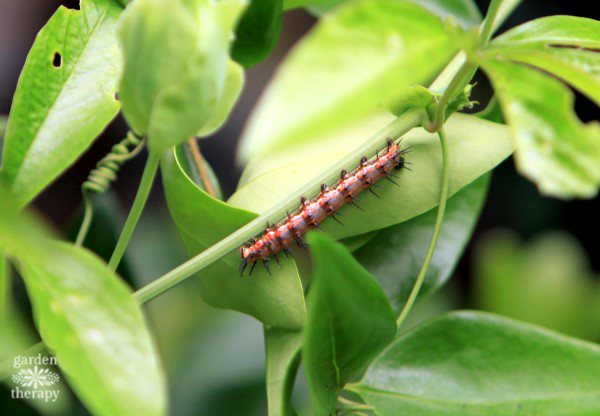
How to Make a Butterfly Garden
Don’t worry, creating a butterfly garden doesn’t mean encouraging a bunch of weeds (although if you do decide to let a few live here or there, butterflies will appreciate it).
Gardeners who want a manicured look, as well as a butterfly garden, have many options for pretty plants that attract butterflies and provide them with what they need throughout their life cycle.
But first, here are a few additional things you need to complete your butterfly garden.
A Sunny Area
Butterflies thrive in the sun. As ectotherms, they rely on external sources in order to stay warm. Before they can fly, they need to make sure their body temperature is warm enough.
You’ve probably seen them perched on a sunny leaf with their wings on full display. This is them soaking up the sun! So on the next sunny day, sit back and watch your visitors check out their favourite plants and sunbathe.
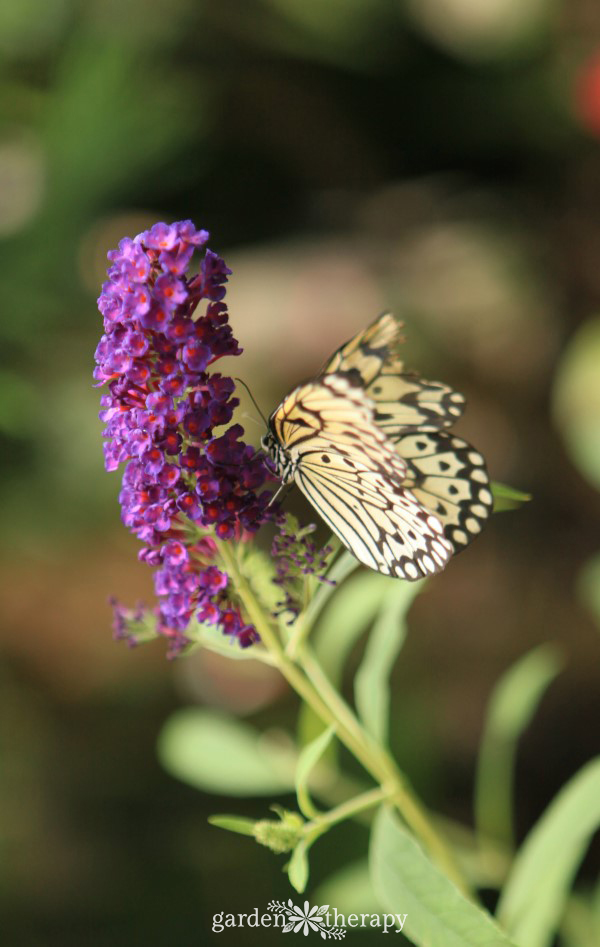
A Butterfly Feeder
A butterfly garden needs the right plants growing in sunny areas and a safe place for mature butterflies to lay their eggs. You can make your habitat even more attractive by putting together a butterfly feeder for them to snack on.
Butterflies feed on nectar which is sugar that comes from a plant. Fresh fruit also provides this for the butterflies. This is a good way to add supplemental nectar to the garden when there may be fewer blooms or if you notice a ton of butterflies.
However, having native plants with lots of nectar throughout the season is the best source!

Mud Puddles
Did you know that butterflies adore mud? They congregate around muddy areas as this gives them salt and nutrients. You can help them out by placing a shallow pan of water out for butterflies. They often avoid birdbaths and other pools because the water is too deep.
A shallow pan gives them access to water for drinking and puddling. Adding some gravel or sand at the bottom helps, as well as rocks for basking in the sun.
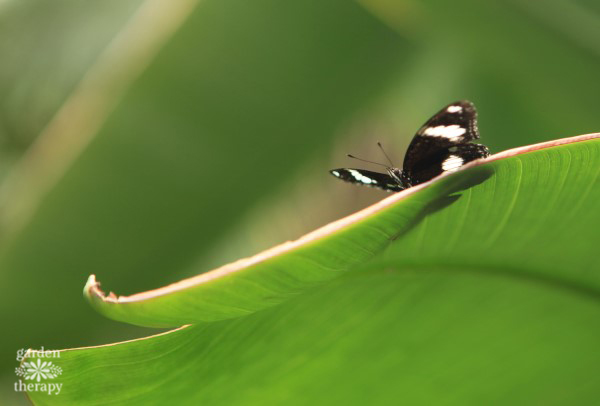
Common Butterflies and Their Host Plants
Choosing native plants or a standard butterfly seed mix will attract various butterflies that are native to your area, but if you are looking to attract particular butterflies, your best bet is to plant the specific host plants that species in your area use.
Here are some of the most common butterfly species and the host plants that they require for the larval stage.
- Woodland Skipper – native grasses (Poaceae)
- Painted Lady – mallow (Malva), borage (Borago officinalis), thistle (Silybum marianum)
- Gray Hairstreak – oak (Quercus), mint (Mentha), strawberry (Fragaria)
- Cedar Hairstreak – Western red cedar (Thuja plicata)
- Great Spangled Fritillary – violet (Viola)
- Variegated Fritillary – violet (Viola), stonecrop (Sedum)
- Western Tiger Swallowtail – bitter cherry (Prunus emarginata), willow (Salix), birch (Betula), poplar (Populus)
- Anise Swallowtail – parsley (Petroselinum crispum), fennel (Foeniculum vulgare), cow parsnip (Heracleum)
- Pale Swallowtail – ceanothus (Ceanothus), alder (Alnus), cherry (Prunus)
- Red Admiral – stinging nettle (Urtica dioica)
- Spring Azure – viburnum (Viburnum), oceanspray (Holodiscus discolor), dogwood (Cornus), cherry (Prunus)
- Common Wood Nymph – native grasses (Poaceae)
- Monarch – milkweed (Asclepias)
- Western Pine Elfin – white pine (Pinus strobus), lodgepole pine (Pinus contorta), fir (Abies)
- Western Tailed Blue – vetches (Vicia), milkvetches (Astragalus)
- Pygmy Blue – pigweed (Amaranthus), saltbrush (Atriplex), lamb’s quarters (Chenopodium album)
For more information, take a look at the National Wildlife Federation’s Native Plant Finder where you can enter your zip code to find native plants and butterflies common to your area.

Plants That Attract Butterflies to Plant in Your Butterfly Garden
Once butterflies reach the mature stage of their life cycle, they are attracted to brightly coloured flowers with flat tops, short flower tubes, or flower clusters.
There are many butterfly-friendly plants, so the chances are you can find a few that will suit your growing zone. Here’s a list of some plants that will attract mature butterflies to your garden as long as they have host plants nearby as well.
- Allium (Allium)
- Aster (Aster)
- Bee Balm (Monarda)
- Black-eyed Susan (Rudbeckia hirta)
- Blanket flower (Gaillardia)
- Butterfly bush (Buddleja)
- Catmint (Nepeta racemosa)
- Cornflower (Centaurea)
- Daylily (Hemerocallis)
- Dill (Anethum graveolens)
- False Indigo (Baptisia)
- Goldenrod (Solidago)
- Hollyhock (Alcea)
- Lantana (Lantana)
- Lavender (Lavandula)
- Lilac (Ceanothus)
- Lupin (Lupinus x hybrida)
- Milkweed (Asclepias)
- Nasturtium (Tropaeolum)
- Phlox (Phlox x arendsii)
- Purple Coneflower (Echinacea)
- Rock Cress (Arabis)
- Sage (Salvia officinalis)
- Sea Holly (Eryngium)
- Shasta daisy (Leucanthemum × superbum)
- Snapdragon (Antirrhinum)
- Sweet alyssum (Lobularia maritima)
- Yarrow (Achillea millefolium)
- Zinnia (Zinnia)
By the way, milkweed might be one of the most beloved butterfly foods! Learn how to grow milkweed and find out why they love it so much. In addition to having a pretty flower garden, you can attract these lovely pollinators at the same time; a perfect garden partnership.

Other Pollinators
Moths are often forgotten about, but they are also beneficial pollinators and can be very beautiful. To attract moths to your garden, plant night-blooming flowers such as evening primrose (Oenothera), phlox (Phlox x arendsii), and fireweed (Chamerion angustifolium).
Now, don’t forget about the bees! Here is how to attract them to your garden (and a bee bath project that the butterflies will love).
Butterflies and bees aren’t the only beneficial insects you want in your garden! Find out about the 7 best bugs for the garden.
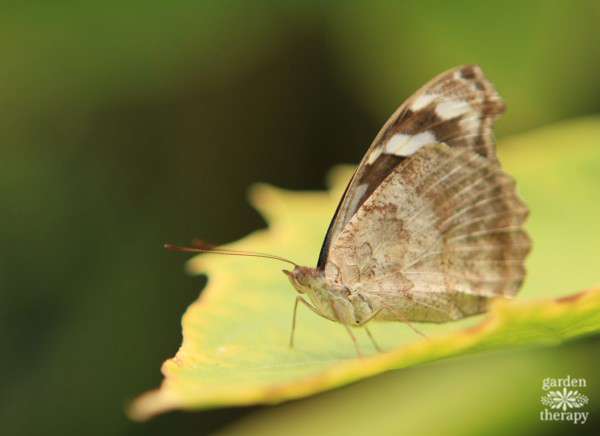




I love butterfly bushes and any type of viburnum to attract da bees and da butters!
The highlight to find native plants doesn’t work in Canada… just the US. :(